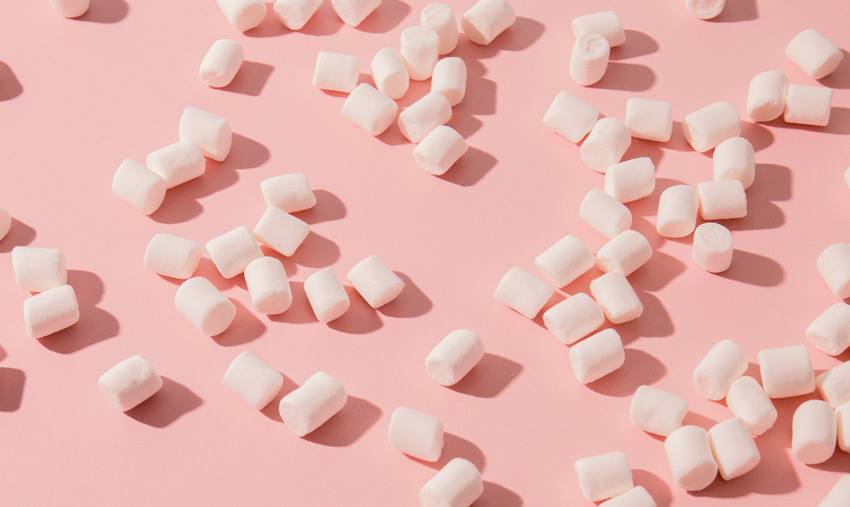A Sticky Subject
On the eve of Thanksgiving, exactly WTF is up with marshmallows?

In two days, Americans will embark on several weird traditions, but maybe none weirder than melting marshmallows on top of sweet potatoes. Before we delve into why, an ooey-gooey history of that weird, soft, sugary confection:
Marshy Origins
Marshmallows got their start in Egypt over 4,000 years ago, or slightly longer than that half-bag of Campfires has been in the back of your pantry. That ancient version was made from a plant called marsh mallow – i.e., a member of the mallow family that grows in marshes. They made a honey-nut confection with the sap from the mallow roots, but it was a treat reserved for royalty. The Ancient Egyptians, Romans, Chinese, and Syrians all used the mallow not just as food, but medicine as well; its mucilage is sorta like nature’s Icy Hot.
In the 1800s, the French got us closer to the marshmallow we know today, whipping mallow root sap by hand in a painstaking, inefficient process. Ever resourceful, they eventually replaced the mallow with gelatin, creating a permanent misnomer. But the market cared not for such pedantry: The European delicacy soon found a hungry audience in America, making its way into everything from MoonPies (1917) to ambrosia salad (ca. 1920s) to Rice Krispies Treats (1940).
Commerce demanded innovation, as commerce does, and in the 1960s Kraft patented the jet-puffing process that gave marshmallows the pillowy shape we know today (lest you ever wonder, they’re dusted with corn starch to keep them from sticking together in the bag).
Enter the sweet potato
Well, they aren’t exactly new: the paper trail on sweet-potato cultivation in the Americas goes back to 750 BCE in Peru (the Old World wouldn’t find out about them until Columbus brought some to Spain). In 1796, the first known cookbook in the nascent U.S., American Cookery, has a recipe for what is essentially modern sweet potato casserole.
But, ta-da, a recipe for sweet potatoes topped with marshmallows appears in a 1919 booklet suggests adding marshmallows to candied yams. This is thought to be the result of marshmallow marketing efforts—a company called Angelus Marshmallows wanted to boost sales and promote marshmallows across the U.S., leading to the development of the recipe booklet.
Whether you think it’s a heavenly treat or a national food disaster, the sweet potato/marshmallow pairing is here to stay. But if you’re in the latter camp, take heart: One poll found that sweet potato casserole is the second most hated Thanksgiving dish, behind only green bean casserole.
Marshmallow Fun Facts
- Americans buy 90 million pounds of marshmallows per year. That’s about 5.76 billion marshmallows (or 63 billion minis).
- Close to the Ohio and Michigan lines, tiny Ligonier, Indiana was once called the Marshmallow Capital of the World
According to the Guinness Book, the “Farthest Marshmallow Nose Blow” was performed by a pair of Americans—a launcher and a catcher—who “blew” the marshmallow nearly 18 feet. (For the record, we’d rather be the launcher.)
